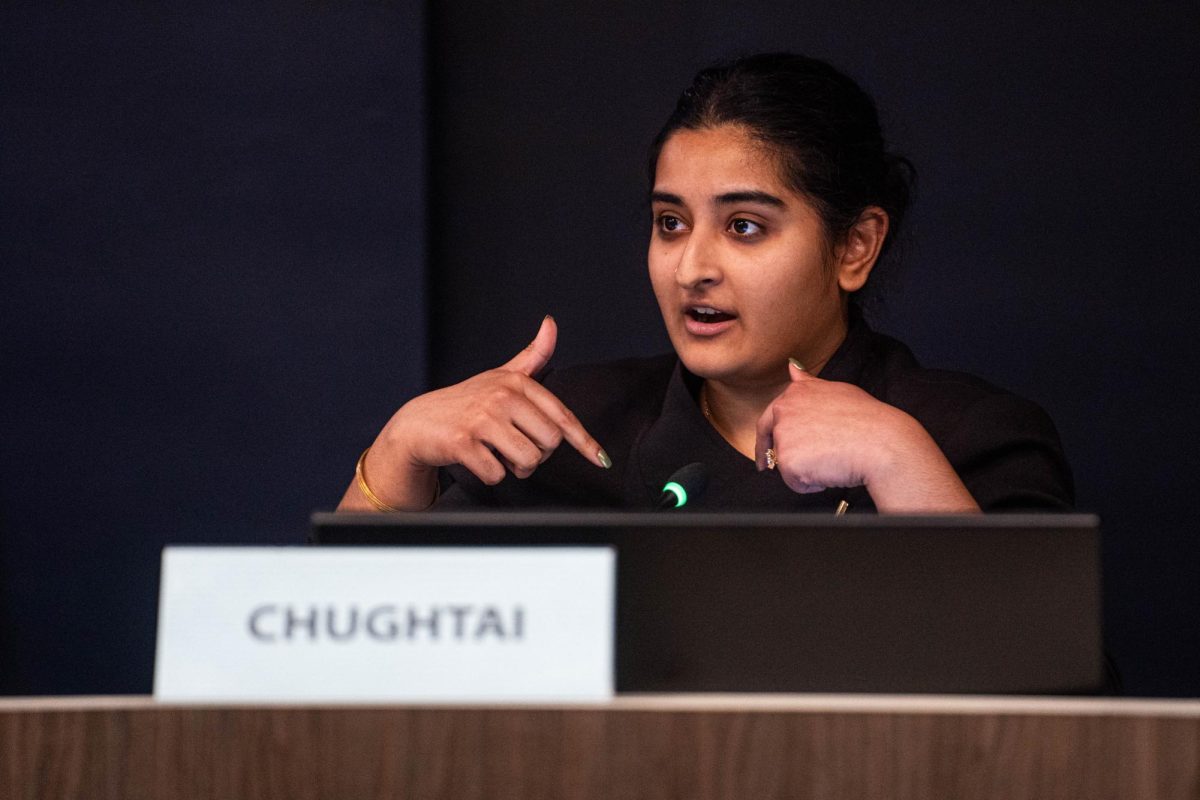Despite years of progress, some say the University of Minnesota needs to make campus more accessible for those with disabilities.
The Minnesota Student Association hopes to tackle accessibility issues by collecting feedback from students this semester. While the University has a decades-long history of advocacy, the current state of accessibility has left some students and faculty dissatisfied.
Present-day concerns
MSA started compiling information about problems students with disabilities face on campus this semester, said Infrastructure Committee Director Erin Deal.
“This is very much a feedback-driven project … and then we’re going to take that feedback and see what we can do to help,” Deal said.
Students have pointed out several problem areas so far, she said, especially the second floor of Coffman Memorial Union.
“It’s not always accessible or easy to navigate,” she said. “We’ve also heard little things, like ramps that are in the back of buildings that are hard to get to.”
Though these problems might seem minor to some, Deal said they can be exhausting for people who face them daily.
Disabled Student Cultural Center Program Director Meryum Syeda said the group regularly hears accessibility complaints, but they usually can only direct students to the Disability Resource Center.
Students sometimes feel the DRC doesn’t do enough for them because complaints don’t often lead to changes, Syeda said.
“We aren’t sure the Disability Resource Center always validates or hears our concerns,” she said.
A major issue for students with disabilities is the lack of automatic restroom doors, especially on the St. Paul campus, where some buildings have no handicap-accessible bathrooms, she said.
University Ph.D candidate Angela Carter specializes in disability justice and feminist studies. As someone with “invisible” disabilities, she said she wants to make education accessible for everyone.
Carter said some students struggle to reach her Ford Hall office, where people in wheelchairs must take two elevators to reach the building’s upper levels.
“It’s technically an accessible building, but it’s really obnoxious,” she said.
Students have gotten stuck in these elevators, Carter said, so she’s started to escort them into the building.
But beyond physical access, she said the University could improve the campus climate by offering a disability studies program.
“When a university says, ‘We value this community … and we think it’s something we should study critically’ … that means something to students who might identify within that community,” she said.
Other schools with fewer resources have disability studies degrees, Carter said, but she teaches one of only a handful of those courses at the University.
“If our goal is to educate the state of Minnesota, what does it mean that we are not educating about disability and society?” she said.
History of accessibility
The DRC is a model for other institutes of higher education, Carter said. First established in the 1920s, the center has expanded over the years to provide services for members of the University with a wide range of disabilities.
Renowned former Minnesota hockey coach Emil Iverson had an exercise room made specifically to help students with physical disabilities. The room was used for three years.
According to a 1934 brochure, the University had a testing center where students with disabilities could access career and academic counseling.
“This work is not based upon the doctrine of negative evidence but is rather an attempt to discover and measure the unique possibilities of an individual … and advise him in what type of professional and vocational work to compete successfully,” the brochure said.
This system was in place before ramps, hearing aids and other tools gained widespread accessibility on campus.
The University added its first disability counselor, who served as a mediator between students and University officials, in 1949.
The position was created after a study showed a rise in disabled World War II veterans returning to school.
The pace of change picked up in the 1970s. In 1972, Minnesota building codes required every building to be handicap accessible.
The University received state funding to build ramps on campus in 1974, and in 1976, federal law mandated equal access to classes for students with disabilities.
The 1990 Americans with Disabilities Act prohibited discrimination based on disability. Seven years later, the University launched its para-transit system, which is still in use.






